Wednesday, April 28, 2010
Thursday, April 15, 2010
Toyota Lexus SUV ‘Safety Risk,’ Consumer Reports Says
April 13 (Bloomberg) -- Toyota Motor Corp.’s new Lexus GX sport-utility vehicle was labeled a “safety risk” by Consumer Reports, complicating efforts by the world’s largest automaker to repair its image after record recalls.
The 2010 GX 460 received the designation and “don’t buy” recommendation because of handling in emergency driving tests, Consumer Reports said today in a statement. The magazine, published by Yonkers, New York-based Consumers Union, said it hadn’t deemed any vehicle a potential safety risk since 2001.
The GX’s rear end “slid out until the vehicle was almost sideways before the electronic stability control system was able to regain control” at a Connecticut test track, the magazine said. “In real-world driving, that situation could lead to a rollover accident, which could cause serious injury or death,” Consumer Reports said.
Toyota’s recalls of more than 8 million vehicles worldwide for defects linked to unintended acceleration and brakes have hurt its reputation and led to U.S. congressional hearings and a rebuke by Transportation Secretary Ray LaHood. The U.S. assessed a $16.4 million penalty against Toyota for delaying its recall of sticky accelerator pedals and said there may be more fines.
“We’re concerned with the results of Consumer Reports testing on the Lexus GX 460 and their suggested buyer recommendation,” Bill Kwong, a Lexus spokesman, said in an e-mail. While the model meets or exceeds U.S. safety standards, Toyota will try to duplicate the test results, he said.
The company “appreciates Consumer Reports bringing it to our attention,” he said.
Government Review
The U.S. National Highway Traffic Safety Administration said it’s in the process of checking the GX 460 to ensure compliance with standards for electronic stability control, which “should prevent the kind of fishtail event described in the CU’s tests.” Drivers of the Lexus SUV should “use care and caution,” the agency said in a statement.
Toyota’s U.S. sales rose 41 percent in March after two months of declines, as the automaker offered incentives such as no-interest loans and discount leases. The March gains included a 42 percent increase for Lexus. GX sales tripled last month to 1,785 and rose almost threefold to 4,787 in the first quarter.
The GX has a starting price of about $52,000, according to Lexus’s Web site. The Toyota City, Japan-based company has its U.S. sales headquarters in Torrance, California.
‘Oversteer Test’
Consumer Reports checked the initial findings in the “lift-off oversteer” test of the GX by repeating it on a second vehicle, said Douglas Love, a spokesman for the magazine.
The magazine said it’s unaware of reports of accidents resulting from what it found in the GX tests. In the oversteer test, “as the vehicle is driven through a turn, the driver quickly lifts his foot off the accelerator pedal to see how the vehicle reacts,” Consumer Reports said.
Toyota American depositary receipts fell 52 cents to $79.03 at 4:15 p.m. in New York Stock Exchange composite trading. They have declined 6.1 percent this year.
The magazine’s safety ratings have caused other automakers to sue Consumers Union. After Isuzu Motors Ltd. sued over a “not acceptable” rating on its 1996 Trooper SUV, a federal jury in Los Angeles in 2000 ruled that Consumers Union hadn’t libeled or defamed the company.
A Suzuki Motor Corp. lawsuit over a Consumers Union rating of the Samurai small SUV was dismissed in 2000 by a federal judge in Santa Ana, California.
Mitsubishi Motors Corp. in 2001 attacked the magazine’s “not acceptable” safety rating on the Montero Limited SUV as a misrepresentation. Consumers Union stood by its tests, in which it said the vehicle tipped onto two wheels in turns.
Tuesday, April 13, 2010
Toyota Taiwan Partner Offers to Repair 200,000 Vehicles
April 12 (Bloomberg) -- Toyota Motor Corp.’s Taiwan representative offered to fix faults in 200,000 vehicles from eight models, including the Camry and Yaris, made in the island.
Hotai Motor Co. won’t charge customers who bought the vehicles made between April 1, 2006 and Nov. 18, 2009 by its affiliate Kuozui Motors, the company said in a statement on its Web site today.
Inspections showed that sealant used on windows, doors, and engine hoods may crack and water may seep into the vehicles, according to the statement.
While the sealant problem doesn’t affect safety it would result in rusting problems if left untreated for a long time, Hotai said in the statement.
Toyota, the world’s largest automaker, recalled more than 8 million vehicles worldwide starting last year to repair two types of acceleration related defects.
Report: State Farm asks Toyota to pay for unintended acceleration insurance claims
Back in September of 2007, State Farm sent a letter to Toyotaasking that the Japanese automaker pay for an insurance claim for a 2005 Camry that had reportedly wrecked as a result ofunintended acceleration. According to a report in USA Today, State Farm wrote, "we are aware of several complaints to your company of sudden acceleration involving the Toyota Camry." The National Highway Traffic Safety Administration was copied on the note, and the government agency wrote back to State Farm stating that it had been looking into unintended acceleration claims since August of 2006, but the investigation had been closed.

State Farm wasn't reimbursed back in 2007, but in light of Toyota's recall of 7.7 million vehicles for acceleration-related issues, the insurance company is taking a second crack at getting cash from Toyota. The process of an insurance company receiving money from an automaker is called "subrogation" and USA Today says Toyota spokesman Brian Lyons told the national newspaper that the process is fairly common.
Common or not, State Farm can recoup up to $30 million from Toyota, and the insurance company says customers involved in unintended acceleration crashes in a Toyota could get their deductible cash back, which can range from $250 to $1,000 or more. However, customers shouldn't expect money any time soon. Case Closure mediation attorney Mark Bunim reportedly told said that the process could take some time to resolve as someone would need to check every Toyota claim and determine whether the accident involved sudden acceleration.
If Toyota doesn't pay for the insurance claims, the automaker could indirectly foot the bill with higher insurance premiums. Due to Toyota's otherwise strong quality and safety reputation, its vehicles are currently relatively inexpensive to insure. If Toyota pays State Farm for accidents involving unintended acceleration it's a near guarantee that other insurers will follow suit.

State Farm wasn't reimbursed back in 2007, but in light of Toyota's recall of 7.7 million vehicles for acceleration-related issues, the insurance company is taking a second crack at getting cash from Toyota. The process of an insurance company receiving money from an automaker is called "subrogation" and USA Today says Toyota spokesman Brian Lyons told the national newspaper that the process is fairly common.
Common or not, State Farm can recoup up to $30 million from Toyota, and the insurance company says customers involved in unintended acceleration crashes in a Toyota could get their deductible cash back, which can range from $250 to $1,000 or more. However, customers shouldn't expect money any time soon. Case Closure mediation attorney Mark Bunim reportedly told said that the process could take some time to resolve as someone would need to check every Toyota claim and determine whether the accident involved sudden acceleration.
If Toyota doesn't pay for the insurance claims, the automaker could indirectly foot the bill with higher insurance premiums. Due to Toyota's otherwise strong quality and safety reputation, its vehicles are currently relatively inexpensive to insure. If Toyota pays State Farm for accidents involving unintended acceleration it's a near guarantee that other insurers will follow suit.
Labels:
acceleration,
insurance,
pay,
state farm,
toyota
Toyota’s Chinese Hybridization
 The Chinese government has been getting serious about controlling the emission and consumption of its rapidly growing fleet. Local manufacturers such as BYD and foreign joint venture partners are quick to rise to the occasion. Toyota’s Chinese joint venture with Guangzhou Automobile launched today a hybrid version of the Camry. The Camry is well liked in China, more than half a million of the non-hybrid version have been sold in China between its launch there in June 2006 and the end of February 2010. The hybrid Camry Hybrid won’t come cheap.
The Chinese government has been getting serious about controlling the emission and consumption of its rapidly growing fleet. Local manufacturers such as BYD and foreign joint venture partners are quick to rise to the occasion. Toyota’s Chinese joint venture with Guangzhou Automobile launched today a hybrid version of the Camry. The Camry is well liked in China, more than half a million of the non-hybrid version have been sold in China between its launch there in June 2006 and the end of February 2010. The hybrid Camry Hybrid won’t come cheap.It will carry an MSRP between 319,800 yuan ($46,800) and 364,800 yuan ($53,400). It will be a tough sell. The Camry is Toyota’s 5th hybrid in China, joining the Prius, launched 2005 as the first hybrid vehicle in China, followed 2007 by the hybrid version of the Lexus LS600, the Lexus RX400h SUV, and the Lexus GS450h sports sedan, launched in 2009.
Another Civil Penalty Coming for Toyota?

House Oversight and Government Reform Committee member Rep. Dan Burton, R-Ind., holds up car accelerator pedal as he questions Transportation Secretary Ray LaHood, on Capitol Hill in Washington, Feb. 24, 2010, during the committee's hearing on Toyota. (AP Photo/Pablo Martinez Monsivais)
Toyota is already facing a fine of more than $16 million for failing to promptly notify the government about defective gas pedals.
The Transportation Department told Toyota in a letter this week that accelerator pedals involved in the recall exhibited two separate defects that may require two separate remedies.
Toyota Executive: "We Need to Come Clean"
The government also said if there weren't a cap of about $16.4 million on fines, Toyota could have faced civil penalties of $13.8 billion. That's because the government could fine the company $6,000 for each of the 2.3 million vehicles under recall.
Toyota has recalled more than 8 million vehicles worldwide.
Monday, April 12, 2010
Critics Say That Toyota’s Smart Team Designed To Discredit Complaints
Toyota (NYSE:T) faced a public relations nightmare earlier this year when the foreign automaker was forced to issue a recall of over six million cars. The company issued the recall over an accelerator issue that caused the gas pedal to become stuck. Reports of uncontrolled acceleration further hurt the image of the company. A spokesperson announced the creation of a new “smart team” to look over potential accelerator problems.
Smart Team – An Attempt To Discredit Consumers
The smart team at Toyota dealerships are supposed to look over the car and spot any potential problems. Critics believe that the creation of the smart team is an attempt to deflect the criticisms that have been leveled at the Japanese car company. The public image of the company suffered when several high-ranking officials warned Toyota not to keep the problems with the accelerator a secret.
SMART stands for swift market and research analysis team. When a customer complains of accelerator problems, the team gets sent out to investigate. The decision to publicly unveil this team has changed the legal strategy from being defensive to more confrontational. A company spokesperson said that Toyota has every right to discredit claims of accelerator problems that customers fraudulently report.
Defense Or Outright Falsehoods
Toyota representatives have appeared before congressional committees and hired testing firms to help spot problems with their products. The new strategy may backfire on the company, as it may be seen as an attempt to spread outright falsehoods, according to Los Angeles Times reporters, Ralph Vartabedian and Ken Bensinger. The public unveiling of the SMART teams may not have been the boon that executives expected. The formation of the team comes before the conclusion of any scientific studies and shortly after the federal government hired experts to look into the sudden acceleration problems of some Toyota and Lexus cars.
State Farm asks Toyota to repay acceleration claims
DETROIT — Armed with reports of accidents for which they've already paid claims, State Farm insurance has asked Toyota to repay them for any crashes related to unintended acceleration by its vehicles.
Other companies are expected to follow and demands for repayment of claims — called "subrogation" in the insurance business — could end up costing Toyota from $20 million to $30 million, says Mark Bunim, an attorney with Closed Case, a mediation firm. Customers could see a bonus from any repayment: Insurance deductibles they paid could be refunded.
"If we didn't incur any risk, we get our part back and you get your part back," says Dick Luedke, a spokesman for State Farm.
Toyota has recalled 7.7 million vehicles in two recalls related to sudden acceleration, one involving floor mats that can jam gas pedals and one involving pedals that stick. The government last week fined Toyota the maximum $16.4 million for violating a five-day deadline in reporting the sticky pedals. Toyota has not decided whether to appeal.
State Farm sent a letter to Toyota in September 2007 asking it to pay for claims in an accident involving a 2005 Toyota Camry. State Farm wrote, "We are aware of several complaints to your company of sudden acceleration involving the Toyota Camry." The driver had reported the same problem to her mechanic twice before, State Farm wrote.
The letter was copied to the National Highway Traffic Safety Administration, which replied by saying it had looked into similar complaints, starting in August 2006, and closed the investigation on April 3, 2007. State Farm wasn't reimbursed.
If Toyota doesn't end up paying for accidents insurers link to sudden acceleration, the cost could trickle down to consumers, who could end up paying higher insurance rates for Toyota vehicles.
Whatever happens, resolution won't come soon.
"Someone has to go through each and every auto claim, and then try to make a determination if it involved unwarranted acceleration," Bunim says. "It could take months."
Toyota spokesman Brian Lyons says subrogation claims are common between insurers and automakers. Beyond that, Toyota had no comment.
Despite recent troubles, Toyota's vehicles don't cost much to insure because they are generally safe and reliable, says Peter Moraga, spokesman for the Insurance Information Network of California. That could change if the problems drag on, he says.
"That's when we would see an impact on insurance rates," he says. "It really depends on what Toyota does in terms of fixing the problem."
DOCUMENTS MAY PROVE TOYOTA KNEW OF PEDAL PROBLEM EARLY
Federal officials are spending Tuesday night looking over 70,000 documents relating to Toyota's safety problems.
Secretary of Transportation and Peoria native Ray LaHood says Toyota made a "huge mistake" by not disclosing safety problems with gas pedals on a number of models.
Officials say documents obtained from the automaker show Toyota knew of the problem with sticking gas pedals in late September but did not issue a recall until late January. LaHood explains, "they're really documents that show that Toyota knew that...that they had a sticky pedal problem. And under the law they're required to report that to us within five days, and they didn't really report it to us until January. I mean, it's clearly a violation, and it's clearly an indication that they...they have violated the law. And we are absolutely not gonna stand for that kind of behavior for one second."
LaHood says he wouldn't be surprised if new information is uncovered in the documents.
Saturday, April 10, 2010
Toyota Altis Corolla
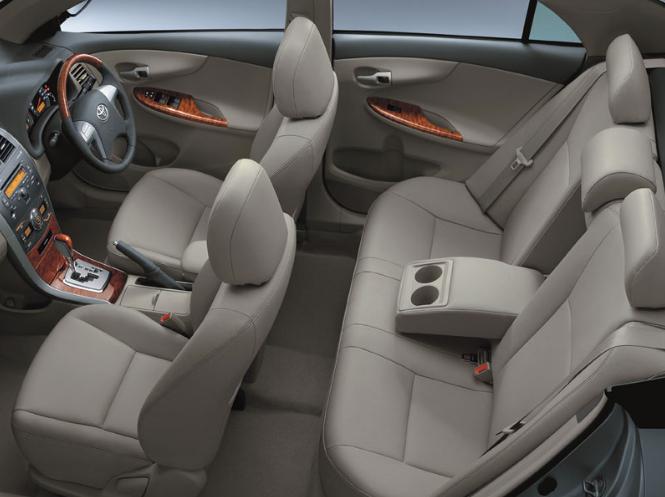
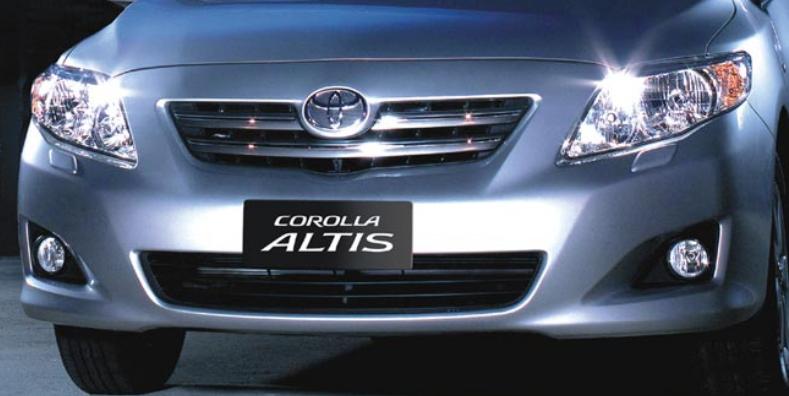
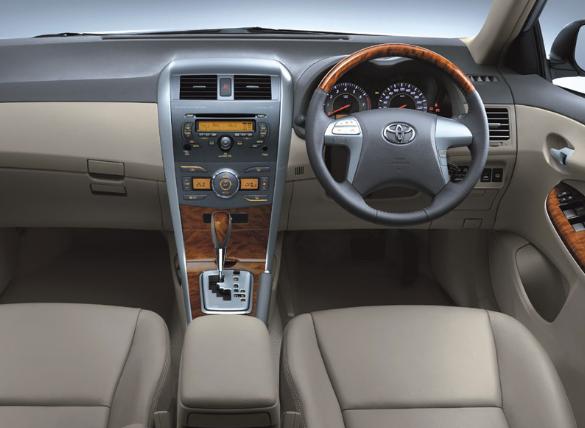
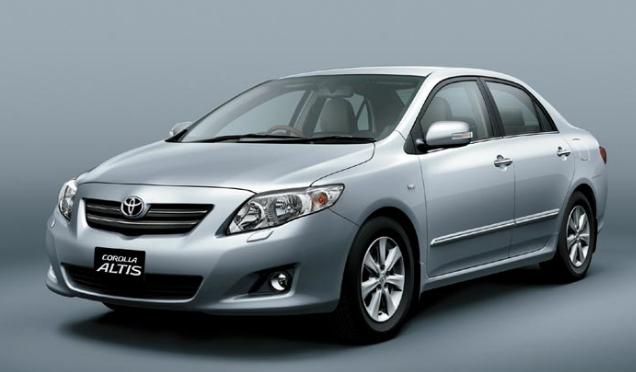
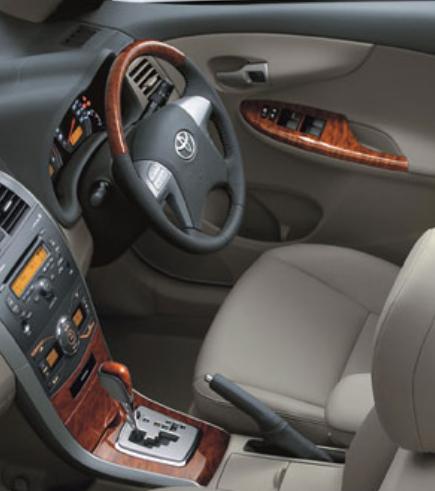

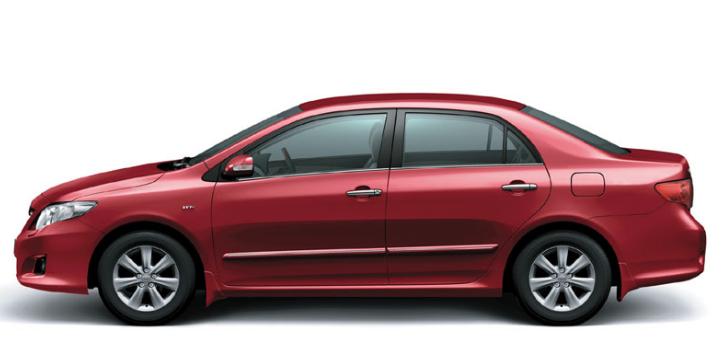

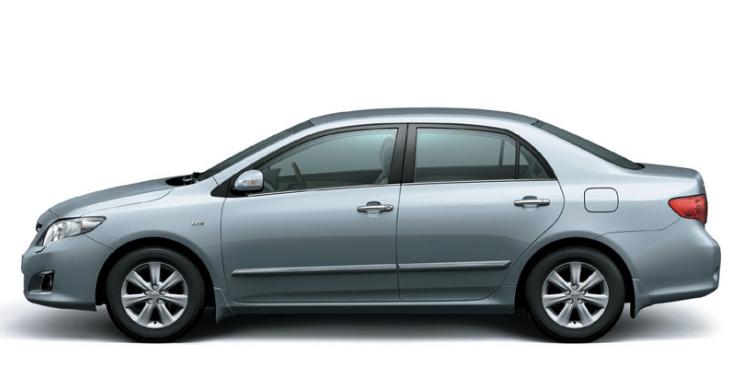

Overview
The Corolla's origins go back nearly 40 years. The new model is the 10th generation of a car that has outsold all others worldwide. According to Toyota, more than 30 million have been produced. Corollas have relied on the model's strong reputation, solid resale value, good build quality and heritage. Toyota unveiled the 1st Corolla back in a 1966 and after than, the industry has sold over 30 million Corolla globally.With Altis, Toyota wants to live the conventional image of the Corolla. Toyota is hoping the all-new, 10th-generation model will also appeal to the increasing number of small-car buyers who like the finer things in motoring, such as attractive styling. Toyota have worked hard on the new six-speed box, with the clutch supporting a new clutch plate structure to enhance wear resistance and reduce noise, vibration and harshness (NVH levels).
Corolla CNG To Be Launched In 2010 - May Be At The Auto Expo, 2010
Toyota plans to launch the Corolla Altis CNG in 2010. After Innova's CNG model, the Altis is the next Toyota vehicle to come factory fitted with a CNG kit. Altis has been very well accepted by the customers in India and it is expected that CNG variant will increase the appeal and demand of Altis in Indian Market. Altis CNG will be same in terms of engine, design and other mechanicals, only change will be a CNG sticker like in Innova CNG and a little weight increase is expected because of CNG tank. More detailed review, photos and exact price of Altis after the official launch. Watch this space.....
Limited Edition Corolla Altis Sport
Toyota India had also launched the Corolla Altis Sport Limited Edition. Toyota manufactured only 100 cars in three months time. The Corolla Altis Limited Edition got a rear spoiler, side skirts all around, sporty alloy wheels, chrome finished grille. The Corolla Altis Sports Limited Edition was available in two exciting colors - Metallic Gray and Metallic Silver. Interiors changes included contemporary dual tone fabric and wood finish rear cup holders. The rest of the Corolla Altis virtues remained same with plush interiors and generous equipment levels. Now, all the accesories on the Limited Edition Corolla are available at Toyota dealerships.
Design & Styling
Similar to Camry, the new Altis features elegant, sharper style. At 4,540mm long, 1,760mm wide, and 1,470mm high, the Altis will be 10mm longer, 60mm wider and 20mm lower than the current model. The wheelbase will be unchanged at 2,600mm, but with the wider track and lower center of gravity.
The extra width has improved the cabin space, and although slightly lower, the Altis is still 50mm taller than the Honda Civic. Previously Toyota had been restricting the width of the Corolla to 1,700mm to avoid a higher tax in Japan, which had resulted in a awkwardly tall and ungainly looking stance for the current model. The integration of the hood into the body of the car is clearly visible. The fender awesomely coincides with the hood. The cluster headlamps add creativity to the design.
Main Features Of Toyota Altis:
Wider and lower front character line.
A distinctive exterior flow lining.
Wing mirror with turn indicator.
Super Electronically Controlled Transmission (ECT).
Front and rear parking sensors.
Plush and soft touch interior paneling.
Auto climate controlled air conditioning.
Fully integrated audio system.
Tilt & telescopic steering control with switch control.
8 way power front seat.
Interiors & Comfort
Altis feels roomy and spacious. The floor in the back is virtually flat, so middle seat passengers will have less to complain about. And they will also benefit from a 3-point seat belt. The boot is also spacious, and thanks to the use of a Torsion Beam in the rear suspension, wheel arch intrusions into the boot are kept to a minimum. The steering wheel looks similar to the one from the Camry, with four spokes, and includes audio controls. Looking through it, the dials are very clear. It has large self-illuminating digits surrounding conventionally sized radial speedometer and rev-counter.Two small LCD displays are inset, one in each dial.
On the right is a standard odometer with trip counter function, while the one on the left shows you if a door hasn't been shut, and has a very nicely implemented real-time fuel consumption indicator. Both of these displays are backlit in amber, and are also very clear and easy to read. Functions are selected with a little stalk button next to each of the displays.
Ride & Handling
Corolla Altis is excellent at smoothing out bumps, but this ride quality comes at the expense of driver involvement. The new model has changed all that, thanks to brand new suspension, and a new electric steering system. A newly-developed L-arm MacPherson strut is a compact and rigid solution, which brings the suspension strut in-board of the wheel hub to improve noise and vibration suppression. This design improves straight line stability, and steering responsiveness.
Rear suspension is by way of a new torsion beam which is a popular arrangement as it allows increased boot space. The suspension layout separates the coil spring and damper while allowing a wider track for the cargo area. The new Electric Power Steering (EPS) provides a high level of control. Additionally, the EPS system contributes to fuel economy since it only uses power when steering force assistance is needed, and since it doesn't require hydraulic fluid, it is also more environmentally friendly than conventional power steering systems.
Engine
Toyota engines have been leading the way in terms of refinement and efficiency of late, and this is set to continue with the use of new dual VVT-i engines in the new model. The Altis has the same 1.8L VVT-i engine as that of an existing Corolla model, tweaked ECU and fuel injection system, improved emission conformity and better fuel efficiency.
The dual VVT-i engines take Toyota's cam shaft variation one step further, allowing independent cam shaft variation for both intake and exhaust timing using one electro-hydraulic variation system for each of the cam shafts. Toyota says that the new clutch-facing material was designed with the environment in mind.
Safety Features
Toyota has upped the anti against the competition and for the first time, Altis features ABS anti-skid brakes with Brake Assist and Electronic Brakeforce Distribution for optimum stopping power in an emergency. This is a feature that should be standard on all new vehicles, along side Electronic Stability Control. Altis has five-star Euro NCAP ratings and will arrive with the safety features such as EBD, ABS, Traction Control, Brake Assist and multiple airbags.
Last Words
The Corolla Altis is for all practical purposes & a no-risk choice for a compact luxury sedan. It is consistently reliable and inexpensive to operate. Good fuel economy, no gimmicky styling and a good list of options offer buyers a lot to choose from. Toyota has done it again. Altis is a great car. It is good value for money in the Thai market where very few cars offer that. Running costs will be low, and fuel economy will be good.
Summing up, the 2008 Corolla Altis is perfect for those who find the Camry too big. You cannot go wrong with the Corolla, the car that built Toyota’s reputation for reliability, high standard of quality and high resale value. The Corolla is the most popular car in history with over 40 million sold worldwide. It may not be as exciting or as sporty as some of its competitors in the compact sedan market, but it will provide you many years of comfortable, trouble-free driving.
Toyota Prius





As with many of Toyota's vehicles, the Prius has become a standard-bearer in its segment. While many automakers have yet to even develop a gasoline-electric hybrid vehicle, Toyota is already on its third generation of the Prius. This four-door hybrid has become a hit with consumers because of its stellar fuel economy, relatively uncompromised driving and acceleration characteristics and reasonable price.
The Toyota Prius (its name comes from Latin and means "to go before") exists as a partial solution to the automobile's problem of tailpipe emissions. The Prius, like other hybrid vehicles, has a special powertrain that combines a gasoline-fueled internal combustion engine with an electric motor. This powertrain, along with other advanced features, allows the Prius to deliver higher fuel economy and lower emissions compared to regular cars.
Due to its popularity and relatively long sales history, Toyota's original hybrid car is a strong candidate for a shopper interested in a used hybrid vehicle. So far, it seems Toyota's reputation for reliability and durability is holding true for the Prius. Early concerns about long-term durability have turned out to be mostly unfounded. However, potential buyers of a used Prius should take extra care during the research process. As the Toyota Prius is quite complex, future repairs and part replacements could be quite expensive.
For information about the latest issue regarding the Toyota Prius' brake problem, click here.
Current Toyota Prius
The Toyota Prius was completely redesigned for 2010. However, it remains a four-door hatchback that seats five people. The car's hybrid powertrain consists of a 1.8-liter gasoline engine that produces 98 horsepower and 105 pound-feet of torque that's used in conjunction with two electric motors and a special planetary gearset that functions as a continuously variable transmission (CVT). Total system power is 134 hp.
Under full acceleration, both power sources work together to provide maximum oomph. But under lighter load conditions such as stop-and-go traffic, the Prius alternates between the two, often running on battery power alone. This maximizes the car's fuel economy potential. A regenerative braking system converts energy normally lost as heat into electricity to charge the car's battery pack. The current powertrain is a little more robust on the highway than the previous-generation car, although not really any quicker away from a traffic light. It is more fuel-efficient, however, with an EPA combined fuel economy estimate of 50 mpg -- which is tops in the hybrid game.
Other changes for this new model include a more sculpted take on the iconic hybrid shape established by its predecessor. The interior was given a more radical overhaul, with a more conventional center control stack than the old car. The hybrid system display now resides high up on the dash next to the digital speedometer, while stereo and climate controls are laid out in a traditional manner with physical buttons rather than a touchscreen (which reappears if you order the optional navigation system). The result is a car that's easier to acclimate to. It's also a bit more comfortable for taller drivers, thanks to a height-adjustable seat and a telescoping steering wheel.
One thing that hasn't changed is the Prius' superb interior packaging, which helps extends the car's appeal beyond simple fuel efficiency. Its hatchback body style allows for an impressive amount of cargo to be lugged around, while a surprisingly commodious backseat makes it a plausible replacement for a family sedan or compact SUV.
In reviews, we've found the current Toyota Prius to build upon its revolutionary predecessor's successful formula of fuel efficiency and versatility. It's now a more normal car to drive and use, making it easier to transition from a traditional car. While Honda's less expensive but smaller Insight is worth a test-drive, those looking for a hybrid should still start their search with the Toyota Prius.
Used Toyota Prius Models
The second-generation Toyota Prius was produced for the 2004-'09 model years. It sat five people in a four-door hatchback body that provided extra versatility in terms of carrying items. This Prius' hybrid powertrain was the same in concept as the current third-generation model, but it featured a smaller, 1.5-liter gasoline engine that produced 76 horsepower and 82 pound-feet of torque. With the electric motor spinning out power, peak net hp was 110.
Aside from its hybrid system upgrades, most buyers will find the interior to be the biggest area of difference between the second-generation model and the current Prius. The dashboard and controls were unconventional and futuristic, with stereo, climate, vehicle system and optional navigation controls residing in a touchscreen interface. There were steering wheel buttons for frequently used items, but ultimately, too much was put under the jurisdiction of the touchscreen (which could wash out in sunlight). The odd gear-selector action of today's Prius was carried over from this generation, but then it was mounted on the dash. Another important difference to note is the lack of a telescoping steering wheel and height adjustment, making for an even more awkward driving position for taller people.
During its successful tenure in Toyota's lineup, this second-generation Prius received minor changes. For 2006, a back-up camera, leather upholstery, leather-wrapped steering wheel and an auxiliary audio jack were added to the options list. A Prius Touring model was added the following year with a slightly firmer "sport" suspension, different 16-inch alloy wheels, a larger rear lip spoiler and several optional items. Side and side curtain airbags also became standard across the board. A "standard" trim level, which lacks cruise control and heated mirrors but in exchange had a significantly lower base price, was added for 2008.
In reviews of the Toyota Prius, our editors have cited outstanding mileage, ultralow emissions, hatchback utility and a reasonable price as the car's greatest strengths. Downsides include soft handling characteristics at highway speeds and, compared to regular midsize sedans, unimpressive maximum acceleration. Most Prius owners say their cars typically achieve real-world mpg ratings in the mid-40s.
The original Prius debuted in the North American market for the 2001 model year. However, Toyota had been selling it in Japan since 1997. This model was the second hybrid vehicle available to U.S. consumers after the Honda Insight. In just about every aspect, the original Prius has been eclipsed by the second-generation car. The first-generation Toyota is slower, smaller and not as comfortable. But this in no way means that it is to be avoided. For a consumer interested in a used and affordable hybrid vehicle, this first-gen Toyota Prius could be a smart choice.
Though less advanced than those in the newer generations, the older Prius' powertrain still paired a gasoline engine with an electric motor. Its 1.5-liter four-cylinder engine made 70 hp at 4,500 rpm and 82 lb-ft of torque at 4,200 rpm. The electric drive motor was worth another 44 peak hp.
Selecting a used Prius based on year shouldn't be too difficult. Models built for 2002 and '03 might have more of a draw, as it was then that Toyota started to offer additional optional features, such as a navigation system, side airbags and cruise control. Most first-generation owners seem quite happy with their cars and overall reliability has been very good.
Toyota Vios
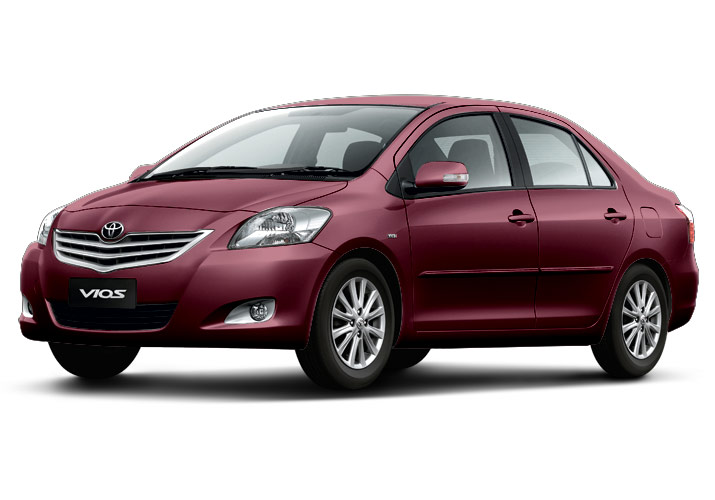
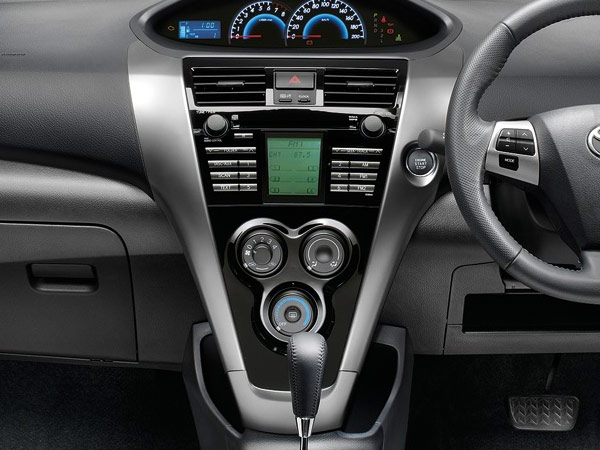
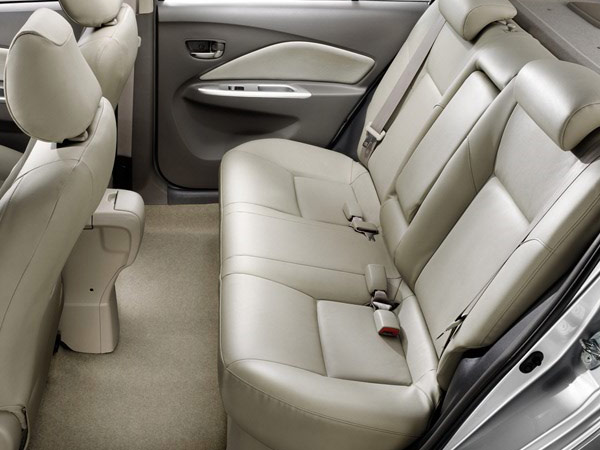
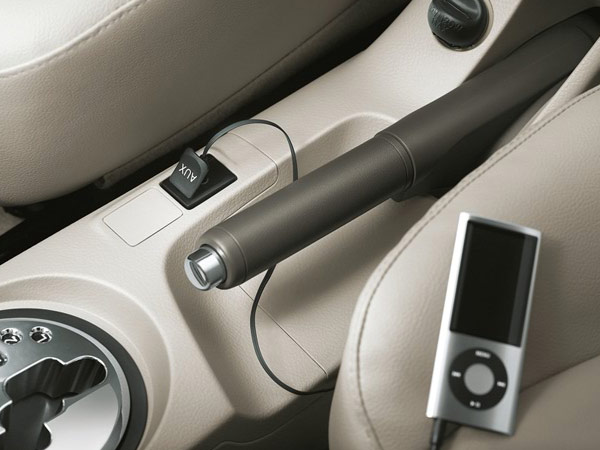
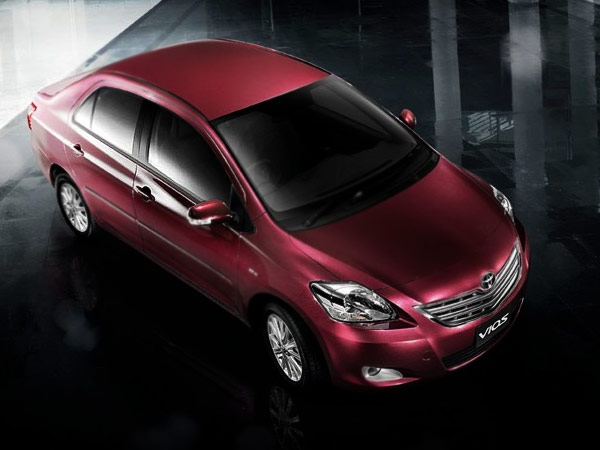
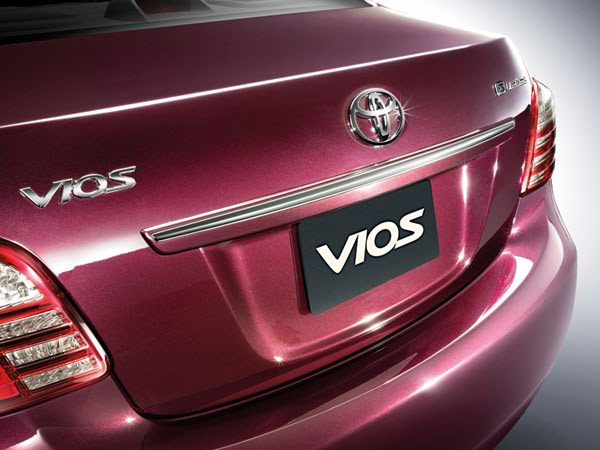
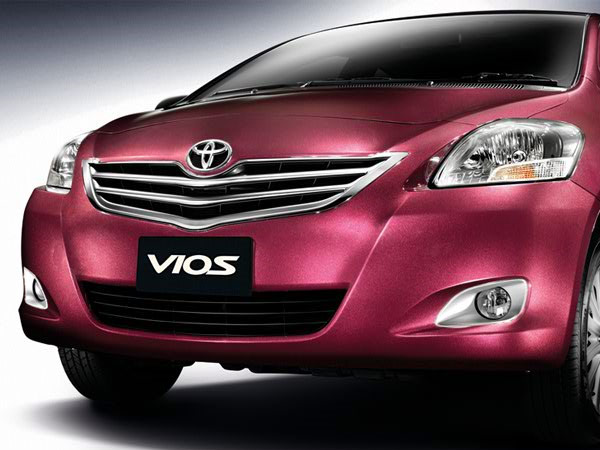
Toyota UMW Malaysia seems to facelifted the vios and it is coming to your showroom near you real soon. The above image which is from Toyota website give us a little tease about the up coming Toyota Vios 2010 Malaysia version. There are not much changes externally – just the usual suspects of changed parts such as the front bumper design, grille, rear tail lamp, and a chrome strip on the boot lid. The engine remains unchanged – it is still the 1NZ-FE DOHC putting out 109 PS and 141Nm of torque.
8 models are available in Thailand. It’s what looks like an aftermarket-ish Heads-Up Display module that displays the car’s current speed on your windscreen. A new AUX input for the radio so you can connect your external MP3 players. Would be better if there was a USB port instead for the audio data to be sent to the stereo digitally. And of course finally, there’s an engine start/stop button which hints at keyless entry and go.
On the back side, the tail lights is redesigned and also a chrome bar is added right above the car license plate (somehow I recall seeing this on the road). I like the chrome added design making it more elegant and it looks wider.
The most significant change as we will notice is the front grille, a different style of rear lamp and possible a new design of rims.UMW Toyota Malaysia will make some adjustment to the price of the new facelift vios.
Refer to the Toyota Vios Facelift 2010 Pricelist and difference below.
UMW Toyota Malaysia will make some adjustment to the price of the new facelift vios.
Refer to the Toyota Vios Facelift 2010 Pricelist and difference below. This also means that you can’t get a Vios below 70k anymore, however Toyota might give some discount here and then over time.
Model Old Price New Price Price Difference
Toyota Vios 1.5 TRD Sportivo (AT) RM90,900 RM92,990 RM2,090
Toyota Vios 1.5G (AT) RM85,025 RM87,990 RM2,965
Toyota Vios 1.5E (AT) RM79,425 RM81,990 RM2,565
Toyota Vios 1.5J (AT) RM73,525 RM76,990 RM3,465
Toyota Vios 1.5J (MT) RM69,825 RM71,990 RM2,165
Road test for Toyota Camry 2.0G







The Toyota Camry has been the sales leader in luxury sedans for years having only the Honda Accord meddling with its title in the past few years and the Nissan Cefiro some years ago. After a lot of foreign media hype, UMW Toyota has introduced this all-new Camry with two engine options. A 2-litre and a 2.4- litre with VVT-i technology. Both engines are carried over from the previous successful model however there has been some improvement in engine management and gearing to accommodate the new larger dimensions and provide better fuel consumption. The exterior design, the interior design, and the onboard controls systems are entirely new, and all of the safety systems have been upgraded and even further integrated. Only a few parts and systems carry over from the previous-generation Camry.
Walkaround
The new Toyota Camry is longer, wider and taller than the outgoing model with a longer wheelbase. Immediate impression with car enthusiasts is its similarities to the very desirable Lexus GS sedan. Most noticeable are the new chrome jewelry on the nose, door handles and rear boot lid. There are also subtle fender flares both in front and at the rear. New design cues include a more upright grille with thick horizontal bars running across, new headlamps with multilamps inside, larger side view mirrors with integrated turn signals and new LED tail lamps. Despite its increased size, width and height, it has a better aerodynamic rating. To keep weight down, weight saving materials has been used and ingenious design with panels and materials.
Interior Features
Inside this car absolutely nothing was taken from the outgoing Camry. Every gauge, indicator, lever, display and lamp has been changed. The most striking change is in the quality of the cabin in its use of materials and fitment. The combination of light colours on the bottom half of the interior and darker colour of the top half with the solid strip of wood veneer running in the middle across the dash and on the center stack around the gated gear shifter raises the luxury ambience of this executive sedan.
The new meter cluster is my only disappointment. The new look leads us to believe that a young designer from the Playstation era was let loose. Using Optitron meters it is clear but tends to be too distracting with its brightness and two-stage layout. Somehow it just did not gel with the rest of the classy cabin!
The revised center console now comes with a rather attractive ambient light around its various functions that moves the Camry up a rung on the luxury ladder. Incorporating a new 'Plasmacluster' air-conditioning system with dual zone climate control. An upgraded sound system has also been introduced providing a higher quality reproductive sound. The new steering wheel houses functions for the stereo as well as the climate system. The driver sits in a well-padded electric seat (the 2-litre 'G' comes with added luxury appointments over the base 2-litre 'E') that is able to accommodate most drivers' dimensions. There is also an electric buttons to adjust the front passenger seat both on the bottom left as well as the top right hand side of the seat to allow the driver to make the adjustments when there is no passenger. We found this function very useful and missing in many luxury cars.
Rear passengers are also pampered more this time. Legroom has increased and this time around 3 adults are able to sit in comfort giving the middle adult more legroom as the rear air-conditioning vent has been redesigned, sitting higher up freeing more room for the feet. Seats are also better padded and with three full sized headrests.
Driving Impressions
Out test Camry came with a 147bhp engine that churns out 190Nm of torque. The engine is mated to a 4-speed Super ECT gearbox that returns a seamlessly smooth gear change action. At idle the engine can hardly be heard inside the cabin or even curbside. Only the air-condition and radiator fan is heard. It is a smooth silent engine and has been improved over the previous version. On the road the Camry is all about smooth ness and refinement. A soft and comfortable ride with a distant muted engine note provides serene progress in town as well as on the highway. Take a more spirited approach in your driving style and the Camry 2.0G starts feeling a little tired as the engine is not tuned for tarmac ripping performance rather it is a luxury executive cruiser. Traffic light burnouts can be achieved but without much fanfare and it will reach the government approved top speed with respect. Taking it beyond that is also possible and at illegal speeds the Camry is very composed and sure-footed. Cornering at respectable speed is good as the chassis and suspension work well to soak in the turn and bumps if any. However if you push the Camry into a tight fast corner it can feel a little unsettling, as the car is not designed for this. In an emergency situation the ABS works well with the Brake Assist. There is also Electronic Brake Force Distribution to distribute brake power when needed. Vehicle Stability Control (VSA) is however available only on the higher priced 2.4 version.
City parking for this large car is made all that mush easier with parking sensors that are now not only in the rear but also up front. We managed to squeeze into small tight mall carparks with relative ease and our exit was also quick.
Conclusion
Toyota has spent a lot of time on the quiet aspects of the car, and called in some of the experts from the Lexus ultra-luxury car team. At continuous cruising speeds up to 155km/h, the Camry is very, very quiet. If you are in the market for a luxury executive sedan that will get your clients or friends at the golf club and in the boardroom jealous without you paying the earth in monthly installments then this is the car for you. The all new Camry 2.0G that we tested here sells for RM145,047.50 without insurance. A 3-year warranty ensures trouble free motoring and a peace of mind.
Subscribe to:
Comments (Atom)


